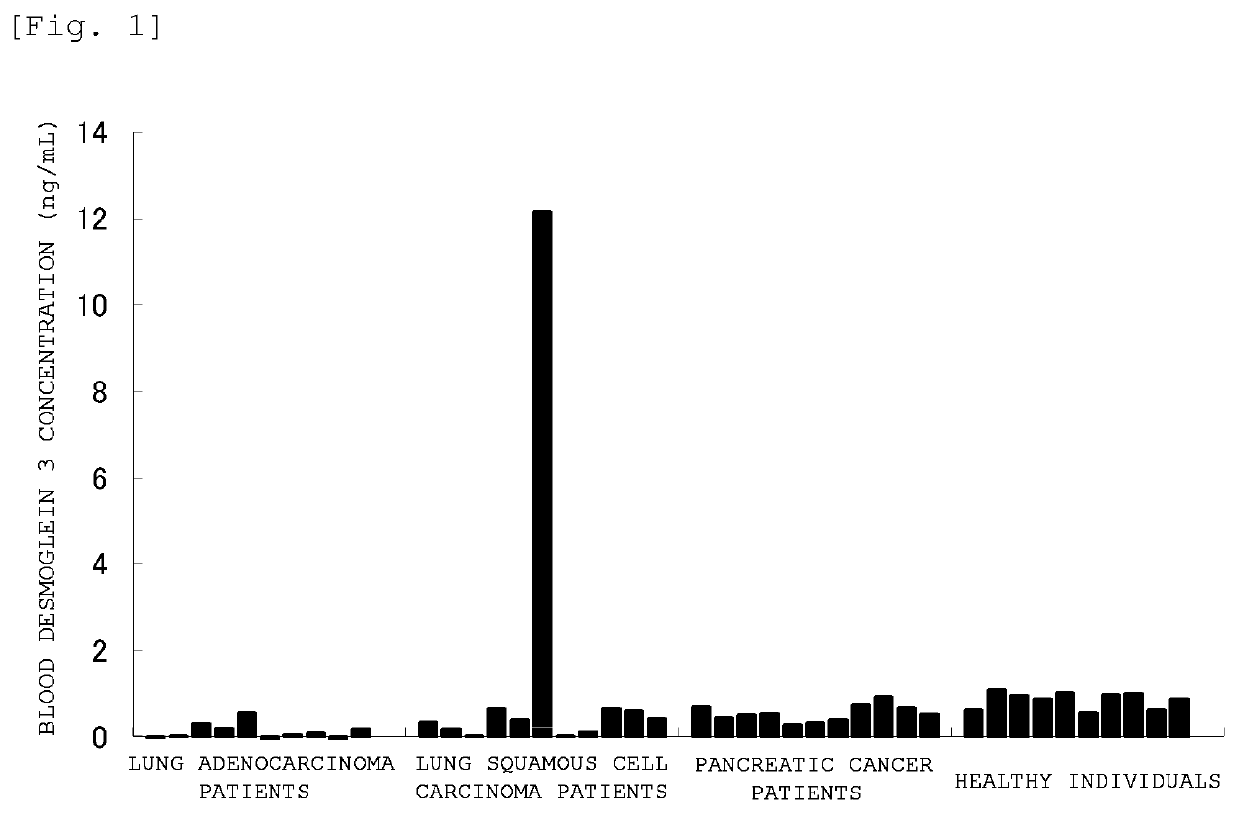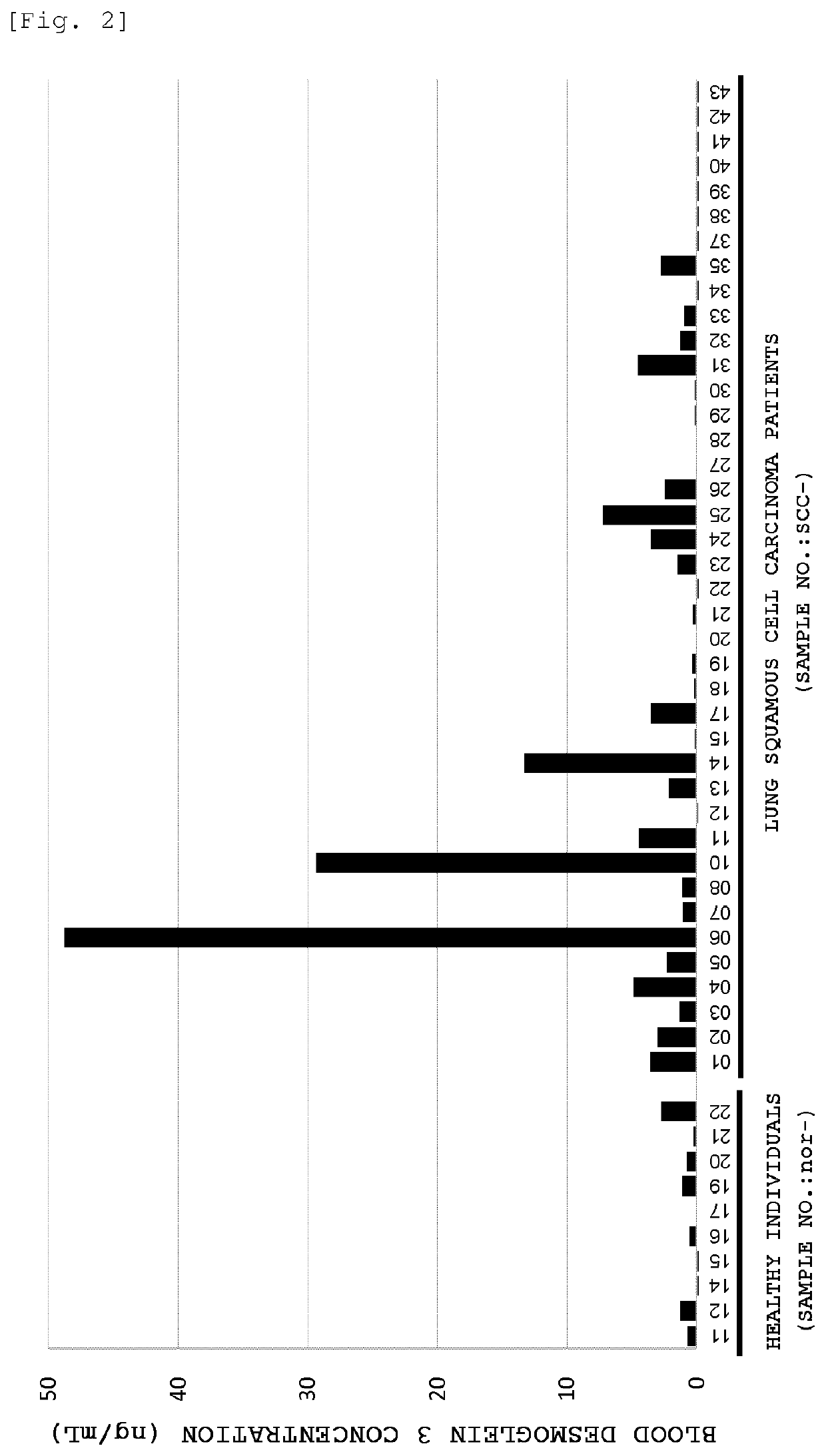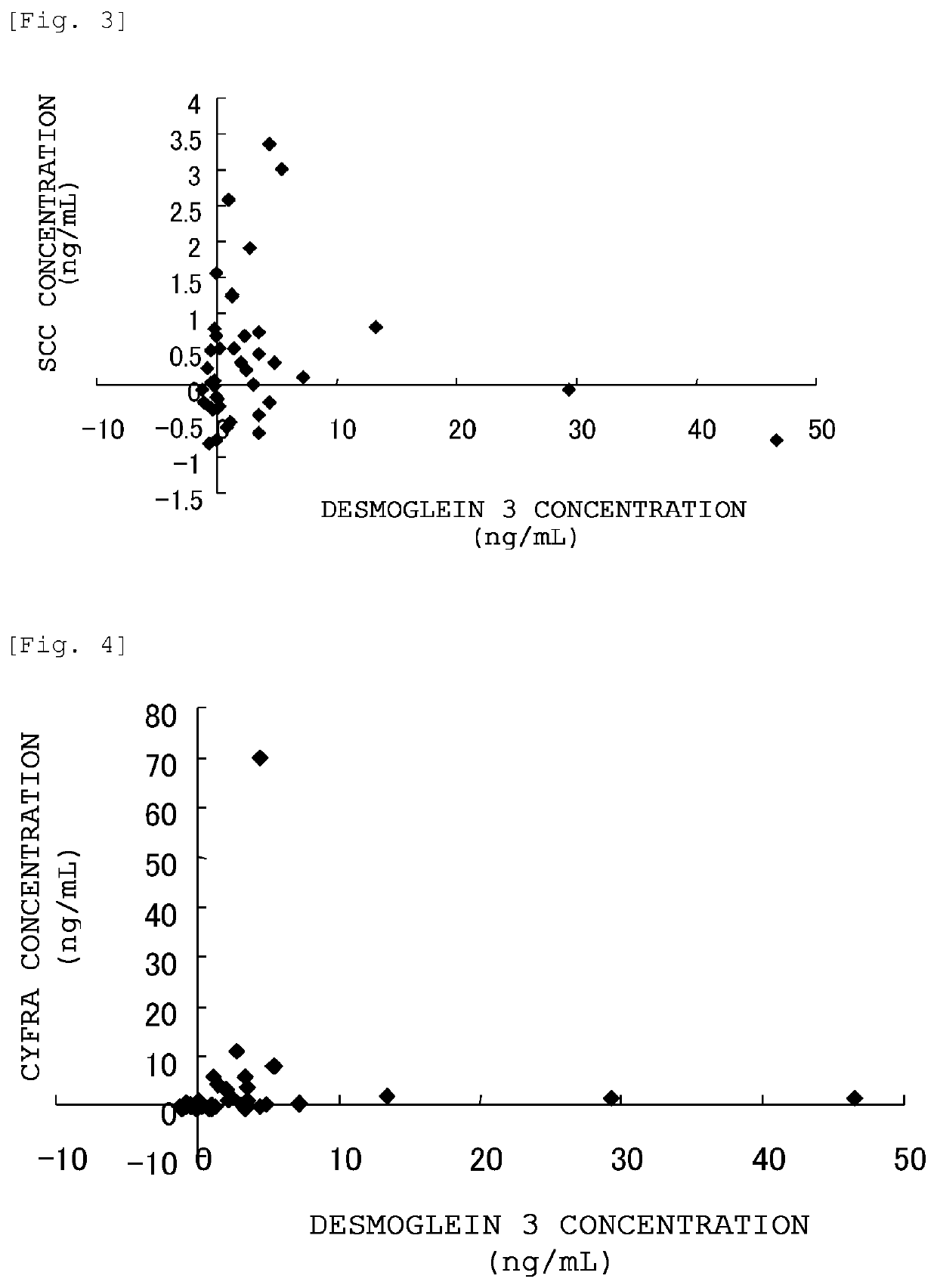Method for detecting lung squamous cell carcinoma
a detection method technology, applied in the field of lung squamous cell carcinoma detection, can solve the problems of poor system prognosis, poor treatment outcome, and mere 13% of the 5-year survival rate, and achieve the effects of simple and prompt method, improved detection performance of lung squamous cell carcinoma, and high sensitivity
- Summary
- Abstract
- Description
- Claims
- Application Information
AI Technical Summary
Benefits of technology
Problems solved by technology
Method used
Image
Examples
example 1
[0150]The following antibodies were used. The antibodies of (1) to (3) were all prepared from a culture supernatant of expression cells into which a hybridoma or a plasmid was introduced, which culture supernatant was produced by the method described in Patent Document 3.
[0151](1) DF366m (DF366m[I] antibody)
[0152](2) DF151 (DF151[I] antibody)
[0153](3) D219-3 (Medical & Biological Laboratories Co., Ltd.)
[0154](4) MAB1720 (R&D Systems, Inc., Catalog No.: MAB1720)
[0155]Biotinylation of a monoclonal antibody was performed as follows.
[0156]To 1 mL of an antibody solution diluted with 50 mM sodium hydrogen carbonate solution (pH 8.5) to a concentration of 1 mg / mL, 10 μL of a solution prepared by dissolving Biotin-AC5-Osu (Dojindo Laboratories, Co., Ltd.) into a dimethylformamide at a concentration of 1.82 mg / mL was added, and the resultant was inversion-mixed at 25° C. for 2 hours. Then, this reaction solution was applied to a NAP-5 column (GE Healthcare, Inc.) to remove unreacted Biotin-...
example 2
[0168]Of the antibody combinations shown in Table 2, for those combinations having a detection limit concentration of 1,000 pg / mL or less, a sample in which a desmoglein 3 standard was added to human serum was measured.
[0169]The test was carried out in the same manner as in Example 1, except that the antigen solutions having a concentration of 0 to 25 ng / mL were prepared by diluting human desmoglein 3 with human serum (Kohjin Bio Co., Ltd., Catalog No.: 12181201). The test was not carried out for the combination of DF151 (solid phase) and D219-3 (detection) which had the lowest S / N ratio and the combination of the same antibodies, DF151 (solid phase) and DF151 (detection).
[0170]The results are shown in Table 3. The numerical values shown in Table 3 represent the values of the detection limit concentration and the unit thereof is pg / mL. It was revealed that even the amount of desmoglein 3 contained in blood can be measured with high sensitivity by using the antibody combination of th...
example 3
[0173]Detection of desmoglein 3 in blood samples of cancer patients was performed as follows.
[0174]Human blood samples obtained from a blood bank (serum or plasma) (10 samples each for healthy individuals, pancreatic cancer patients, lung adenocarcinoma patients and lung squamous cell carcinoma patients) were 10-fold diluted with bovine pooled serum (Kohjin Bio Co., Ltd.) to prepare test solutions.
[0175]DF366m was diluted with 100 mM sodium hydrogen carbonate buffer (pH 9.6) to a concentration of 5 μg / mL, and the resulting solution was added to a polystyrene ELISA plate (MaxiSorp Plate (trade name), manufactured by NUNC) in an amount of 50 μL / well. The ELISA plate was then incubated overnight at 4° C. to immobilize the antibody.
[0176]After removing the antibody solution, 1% BSA-PBS(−) (blocking solution) was added in an amount of 100 μL / well, and the plate was incubated at room temperature for 2 hours to perform blocking.
[0177]Subsequently, after removing the blocking solution and w...
PUM
| Property | Measurement | Unit |
|---|---|---|
| concentration | aaaaa | aaaaa |
| concentration | aaaaa | aaaaa |
| concentration | aaaaa | aaaaa |
Abstract
Description
Claims
Application Information
 Login to View More
Login to View More - R&D
- Intellectual Property
- Life Sciences
- Materials
- Tech Scout
- Unparalleled Data Quality
- Higher Quality Content
- 60% Fewer Hallucinations
Browse by: Latest US Patents, China's latest patents, Technical Efficacy Thesaurus, Application Domain, Technology Topic, Popular Technical Reports.
© 2025 PatSnap. All rights reserved.Legal|Privacy policy|Modern Slavery Act Transparency Statement|Sitemap|About US| Contact US: help@patsnap.com



